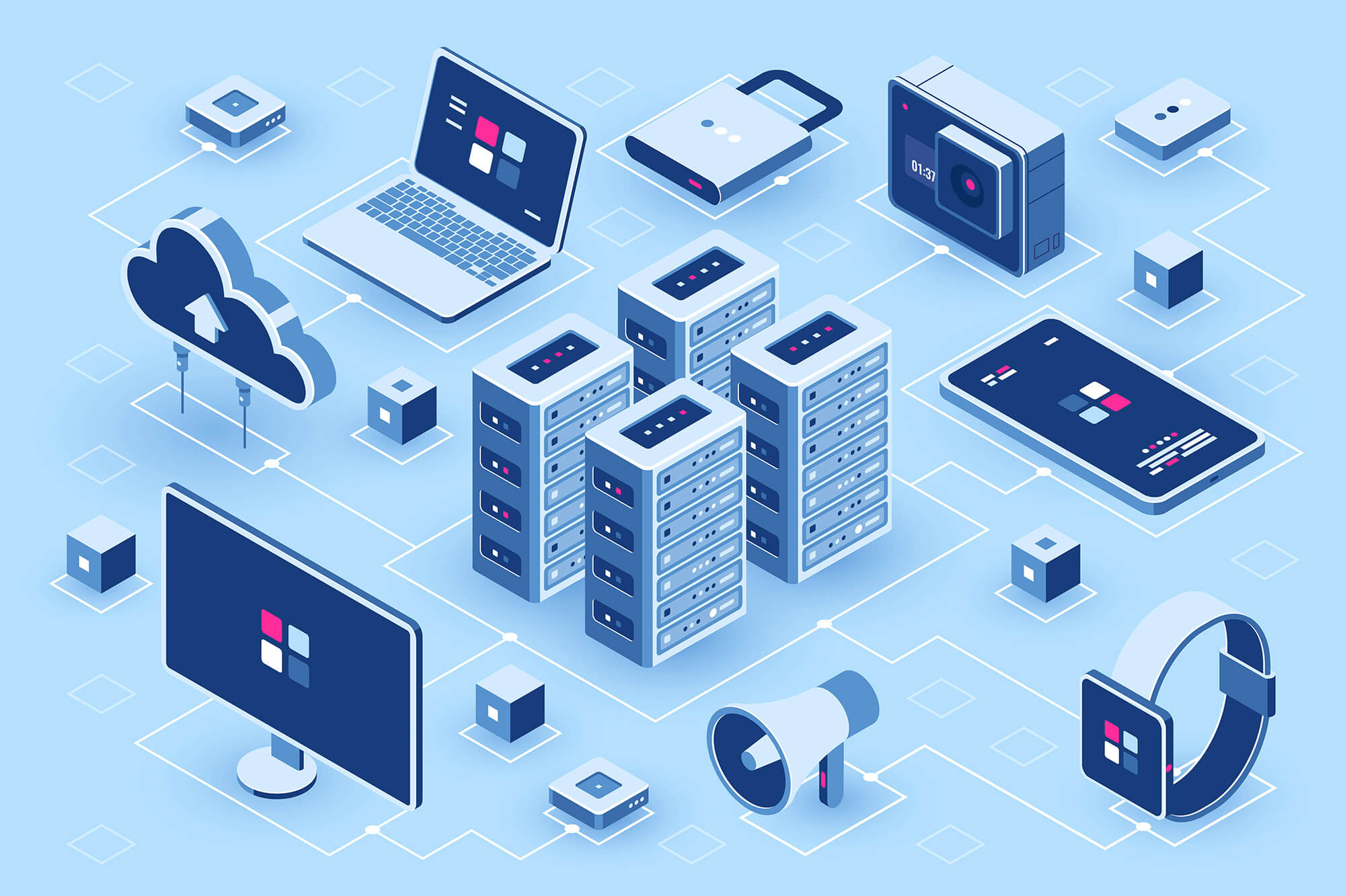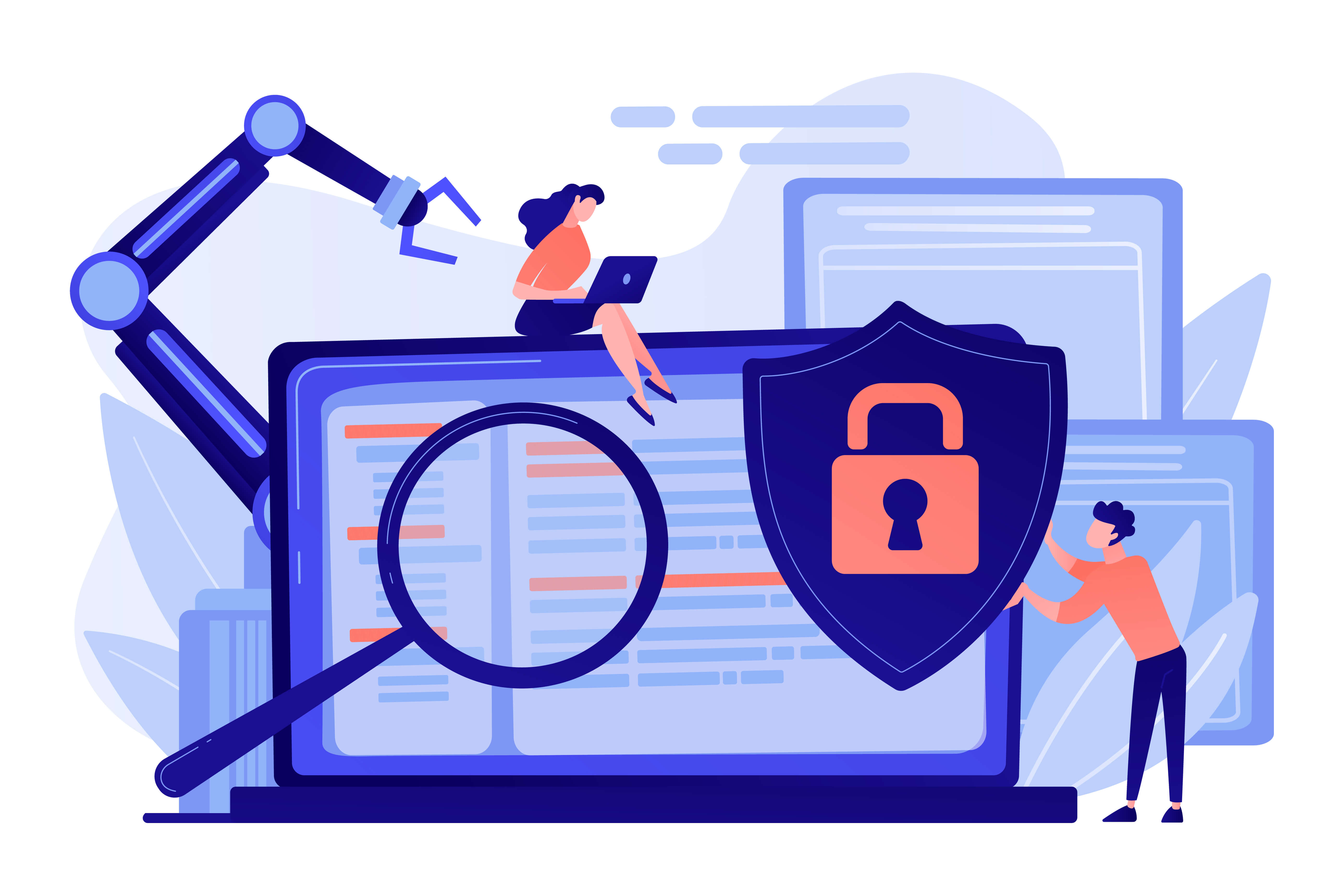News & Blog
Cyber Vigilance: Understanding and Protecting Against Malware Infections

In this blog post, we will look at the landscape of malware infections, the impact they can have and effective strategies for safeguarding against them.
Malicious software (malware) infections threaten society at all levels – from the individual who opens a phishing email leading to their bank account being hacked, to the organisation that comes to a standstill because of ransomware. Even if the term isn’t familiar to you, you’ll have read about it all the same - malware is a broad term encompassing a variety of harmful programs designed to infiltrate and compromise digital systems.
Overview of Malware
In today’s digital era, understanding and protecting against malware infections is crucial for everyone, from individual users to large organizations. Malware, or malicious software, encompasses various harmful programs like viruses, worms, trojan horses, ransomware, and spyware, each capable of infiltrating and damaging digital systems. This blog post delves into the diverse landscape of malware infections, detailing how they operate, the potential impact they can have, and highlighting effective strategies for defence. From the mechanics of different malware types such as the self-replicating nature of viruses to the deceptive guise of trojan horses, and the increasing threat of ransomware, we explore each aspect thoroughly. Additionally, the post emphasizes the importance of proactive measures like installing reputable antivirus software, regular updates, employee education, robust network security, and data backups. These strategies are not just preventive but also essential in building a resilient defence against the constantly evolving threats in our interconnected digital world.
Understanding Malware
Threat actors use malware as a way to gain access to systems unnoticed. Viruses, worms, trojan horses, ransomware, and spyware are just a few examples of the diverse range of malware that can compromise your digital environment.
Viruses: Much like a biological virus, computer viruses spread from one host to another. These self-replicating programs attach themselves to legitimate files and propagate through user actions, such as opening infected email attachments or downloading compromised software.
Worms: Worms are standalone malware that replicate and spread without the need for a host file. They can exploit vulnerabilities in network security, rapidly propagating through interconnected systems. Unlike viruses, worms don't necessarily require user interaction to spread, making them particularly insidious.
Trojan Horses: Named after the ancient Greek story, trojan horses appear as legitimate software but harbour malicious intent. Users unknowingly install them, giving cybercriminals unauthorised access to sensitive data, or control over the infected system.
Ransomware: You’ll have seen ransomware mentioned regularly in the media over the past few years. It’s a rapidly growing threat using malicious software that encrypts files, rendering them inaccessible until a ransom is paid. Cybercriminals exploit this tactic to extort money from individuals, businesses, and governmental organisations.
Spyware: As the name suggests, spyware operates stealthily, collecting sensitive information without the user's knowledge. This data may include login credentials, browsing habits, or personal details, which can then be exploited for various malicious purposes.

The impact of malware infections
The consequences of a malware infection can be severe, ranging from financial losses to the compromise of sensitive personal or corporate data. Businesses face the risk of reputational damage and legal consequences if customer information is compromised. Not only that, but the loss of critical data can cripple operations, leading to downtime and, consequently, financial setbacks. Below are a couple of examples:
- Capita Cyberattack: In March 2023, Capita, a prominent outsourcing company, suffered a significant cyberattack that impacted both the public and private sectors in the UK. This breach disrupted internal Microsoft Office 365 applications, leading to service interruptions for various UK clients including local authorities in Barnet, Barking, and South Oxfordshire, as well as major entities like the British military, the NHS, and the BBC. Notably, the data of 470,000 members of the Universities Superannuation Scheme (USS), the UK's largest pension scheme for universities and higher education institutions, was potentially compromised during this cyberattack. Read more on the biggest cyber attacks of 2023 so far.
- Royal Mail Ransomware Attack: On 12 January 2023, Royal Mail disclosed that it had experienced a severe service disruption to its international export services due to a cyber incident caused by the Russian ransomware gang LockBit. This incident halted Royal Mail's international shipping services and caused minor delays in national postage. Read more on the Royal Mail ransomware attack.
These examples underscore the broad-reaching effects of malware attacks, affecting both operational capabilities and sensitive data security, with significant repercussions in both the public and private sectors.

Defence strategies
Antivirus and anti-malware software: Ensure you install reputable antivirus and anti-malware software because it’s the first line of defence. These programs regularly scan and detect potential threats, neutralising them before they can cause harm. There are a lot of options out there, so undertake research to find the right software for your purposes.
Regular software updates: Keep operating systems, applications, and security software up to date. The updates you install on your computer, your phone and other technology, aren’t just about updating features, they often include security updates (or patches) for known vulnerabilities, reducing the risk of exploitation.
Employee education: Humans are the last line of defence when it comes to cyber security and sadly, human error remains a significant factor in malware infections. Educating your people about the dangers of phishing emails, suspicious downloads, and other common attack vectors can significantly reduce the risk of a successful malware infiltration.
Network security measures: It’s vital to implement robust network security measures, such as firewalls and intrusion detection systems. They can block malicious activity and prevent unauthorised access to sensitive information.
Data backups: Regularly backing up important data is essential for mitigating the impact of ransomware attacks. In the event of an infection, having clean, up to date backups ensures that valuable information can be restored without succumbing to the extortion.
Vigilance in the digital age
Malware infections represent a pervasive and evolving threat in our interconnected digital landscape. Understanding the different types of malware and implementing proactive defence strategies are critical steps in safeguarding against these silent invaders. As technology advances, so too must our commitment to cyber security, ensuring a resilient defence against the ever-present dangers in the digital realm.
Associated Training
MKC Training’s, Cyber Training Alliance (CTA) is a true alliance of trusted Small and Medium Enterprises (SMEs) operating together to the mutual benefit of each company and collectively to the benefit of its customers. The CTA brings together complementary companies to deliver a coherent, powerful, and compelling offering to meet the needs of the ever-evolving cyber market with greater agility and value for money. The CTA was founded by MKC Training to bring together a trusted network of like-minded SMEs to deliver cyber training, delivering real skills rather than theory.
To help you further develop your skills and knowledge in Cyber Training, we've curated a list of relevant training resources. This includes a mix of free and paid options, online courses, certifications, workshops, and webinars. Each resource is briefly described, highlighting its key features, learning outcomes, and target audience.
If you would like to know more about our training capabilities, please contact courses@mkctraining.com for further information or following one of the links below.
CREST Certified Incident Manager (CCIM) Training Course
Executive Cyber Awareness Training Course
Cyber Security Fundamentals NCSC-Certified Course
About the Author(s)

Lead Author: Keith Buzzard
CTO and Incident Response Specialist, Protection Group International
Keith joined PGI in 2013 and until July 2021, led PGI’s Incident Response team. Coming from a defensive and offensive digital security background, he has the experience and insight required to direct and advise on the technological elements of digital security strategies. He understands and is able to provide insight into a mix of approaches, including reverse engineering, signature writing, incident response, forensics, penetration testing, solution design, transformation training / mentoring and vulnerability development and has the ability to translate between senior stakeholders and technical operators in a way that aligns with organisational goals and technical reality.

Co-Author: Trevor Jackson
Founding Director of Metier Solutions Ltd
Trevor Jackson is Founding Director of Metier Solutions Ltd a trusted strategic consultancy, specialising in people, organisational performance, training and capability building. Lead training research, consultancy function for QinetiQ's cyber, information and training division and was head of architecture for BAE AI cybers business unit. A proven track record in market analysis, business strategy underscores a multidimensional approach to complex problem-solving.

Co-Authored Blog Bunny
An advanced AI developed by OpenAI, GPT content is designed to simplify and explain complex concepts with authority and clarity. Specialising in transforming intricate topics into engaging, easy-to-understand articles, Blog Bunny employs its vast database and research capabilities to ensure factual accuracy and depth. Dedicated to enhancing the educational aspect of blog posts, a source for insightful, well-researched, and expertly written content that resonates with readers across various domains. Access a paid account at Blog Bunny.
Sources
Malwarebytes. (n.d.). What is Malware? Malware Definition, Types, and Protection.
Mbon, R. (n.d.). Malware 101: A Beginner's Guide to Understanding Malware.
Palo Alto Networks. (n.d.). Malware | What is Malware & How to Stay Protected from Malware Attacks.
CSO Online. (n.d.). Malware explained: Definition, examples, detection, and recovery.
Federal Trade Commission. (n.d.). How to Recognize and Avoid Phishing Scams.
Disclaimer
Please note that parts of this post were assisted by an Artificial Intelligence (AI) tool. The AI has been used to generate certain content and provide information synthesis. While every effort has been made to ensure accuracy, the AI's contributions are based on its training data and algorithms and should be considered as supplementary information.
Other blog posts in this series:
- Navigating the Cyber Security Training Landscape: Key Insights and Market Trends
- Mastering the Defence Against Social Engineering Tactics
- We Are Only Human - Why Social Engineering is Critical to the Hackers
Understanding and protecting against malware infections is crucial for everyone
Discover our other posts by category:
- Apprenticeships (3 posts)
- Armed Forces (7 posts)
- Company News (20 posts)
- Construction (7 posts)
- Courses (10 posts)
- Covid-19 (4 posts)
- Cyber and IT (4 posts)
- eLearning (6 posts)
- Engineering (2 posts)
- Events (4 posts)
- Exams (2 posts)
- Gamification (4 posts)
- Gas (1 post)
- Health and Safety (5 posts)
- ITIL (10 posts)
- Project
Management (22 posts) - Scaffolding (1 post)
- Technology (13 posts)
- Training Strategy (8 posts)